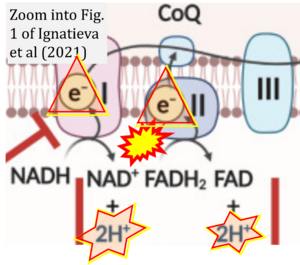Ignatieva 2021 Int J Mol Sci
| Ignatieva E, Smolina N, Kostareva A, Dmitrieva R (2021) Skeletal muscle mitochondria dysfunction in genetic neuromuscular disorders with cardiac phenotype. Int J Mol Sci 22:7349. https://doi.org/10.3390/ijms22147349 |
Ignatieva E, Smolina N, Kostareva A, Dmitrieva R (2021) Int J Mol Sci
Abstract: Mitochondrial dysfunction is considered the major contributor to skeletal muscle wasting in different conditions. Genetically determined neuromuscular disorders occur as a result of mutations in the structural proteins of striated muscle cells and therefore are often combined with cardiac phenotype, which most often manifests as a cardiomyopathy. The specific roles played by mitochondria and mitochondrial energetic metabolism in skeletal muscle under muscle-wasting conditions in cardiomyopathies have not yet been investigated in detail, and this aspect of genetic muscle diseases remains poorly characterized. This review will highlight dysregulation of mitochondrial representation and bioenergetics in specific skeletal muscle disorders caused by mutations that disrupt the structural and functional integrity of muscle cells.
• Bioblast editor: Gnaiger E
Correction: FADH2 and Complex II
- FADH2 is shown as the substrate feeding electrons into Complex II (CII). This is wrong and requires correction - for details see Gnaiger (2024).
- Gnaiger E (2024) Complex II ambiguities ― FADH2 in the electron transfer system. J Biol Chem 300:105470. https://doi.org/10.1016/j.jbc.2023.105470 - »Bioblast link«
Hydrogen ion ambiguities in the electron transfer system
Communicated by Gnaiger E (2023-10-08) last update 2023-11-10
- Electron (e-) transfer linked to hydrogen ion (hydron; H+) transfer is a fundamental concept in the field of bioenergetics, critical for understanding redox-coupled energy transformations.
- However, the current literature contains inconsistencies regarding H+ formation on the negative side of bioenergetic membranes, such as the matrix side of the mitochondrial inner membrane, when NADH is oxidized during oxidative phosphorylation (OXPHOS). Ambiguities arise when examining the oxidation of NADH by respiratory Complex I or succinate by Complex II.
- Oxidation of NADH or succinate involves a two-electron transfer of 2{H++e-} to FMN or FAD, respectively. Figures indicating a single electron e- transferred from NADH or succinate lack accuracy.
- The oxidized NAD+ is distinguished from NAD indicating nicotinamide adenine dinucleotide independent of oxidation state.
- NADH + H+ → NAD+ +2{H++e-} is the oxidation half-reaction in this H+-linked electron transfer represented as 2{H++e-} (Gnaiger 2023). Putative H+ formation shown as NADH → NAD+ + H+ conflicts with chemiosmotic coupling stoichiometries between H+ translocation across the coupling membrane and electron transfer to oxygen. Ensuring clarity in this complex field is imperative to tackle the apparent ambiguity crisis and prevent confusion, particularly in light of the increasing number of interdisciplinary publications on bioenergetics concerning diagnostic and clinical applications of OXPHOS analysis.




